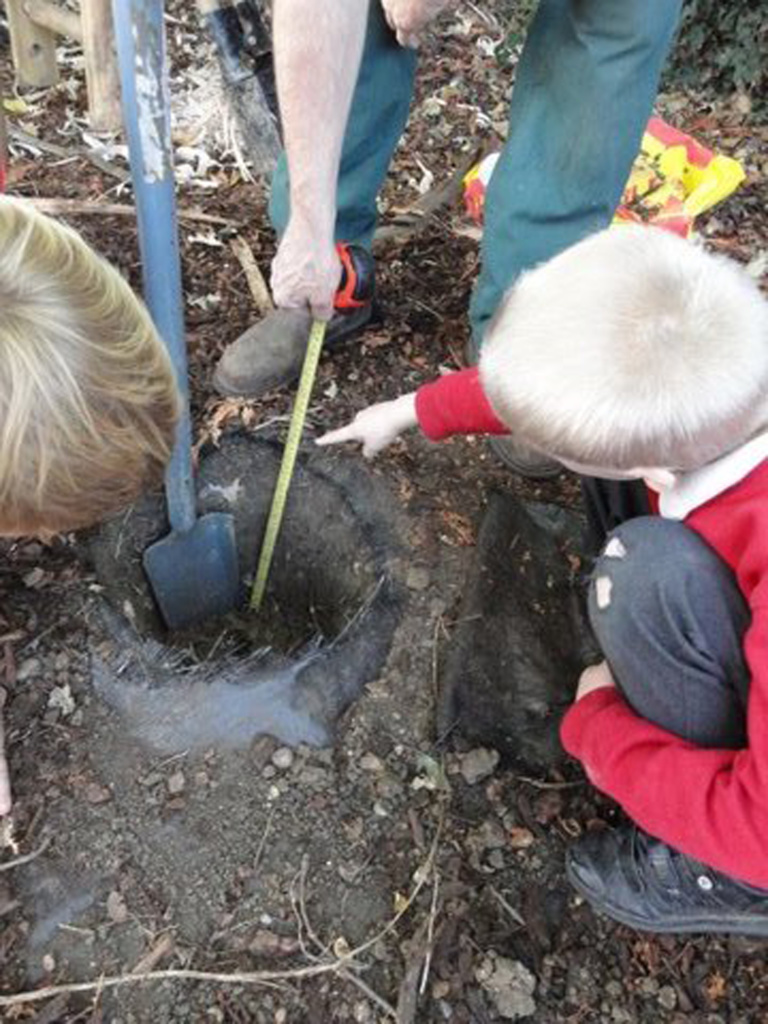
Does the notion of Outdoor Learning immediately conjure up for you Forest Schools? Minibeast safaris? or food growing? All these activities are very worthwhile of course, but this article looks at another aspect of learning outside the classroom.
The school grounds are a huge and often underused learning resource and ‘classroom’ space, where there is open air and opportunity for practical activities, louder, bigger, wetter and messier learning. This is generally accompanied by fun and laughter too. So, my working life as a landscape architect has revolved around helping children and teachers to make the best use of this space, for everyday core curriculum delivery and enrichment. I also believe that engagement in the process of change, during implementing school ground developments large or small, is a valuable learning opportunity. This article explores this in more detail.
Learning through design and build
Landscape architects and teachers could make a lot more of the possibilities of engaging children in the process of design and build, whether on the scale of a major development, a small extension project that impacts the grounds, or modest playground modifications. Budgets are always tight, and funding children’s engagement might be considered a luxury, however, the learning benefits can add weight to the argument to allocate a percentage of the capital budget for specialist support to do this. Some schools use their pupil premium funding to support this enriching learning opportunity. Many schools have valued the opportunity to engage children meaningfully in their grounds projects and feel it is important to do so. Even small projects benefit from the overview and experience of a landscape architect who really understands schools and can work effectively with children and staff. We can ask the right questions, to be sure that budgets are spent carefully and that real needs are met, to enhance outdoor learning and play from early years to secondary. Remember that this is not always the same as perceived needs! Skillful observation of the grounds in use, together with insights from the children themselves is the starting point.
Engagement in the process of change
Keeping the learner at the heart of design is key, and children are often consulted, but are they engaged? Adults who are pressured by time frames and other imperatives take the decisions. I would argue that children should also have the opportunity to begin to understand the process of change, and the complexity of these decisions. How better to do this, than to have them involved in school grounds development projects. Depending on scale, this can either be shadowing a larger scheme and developing a part of it, or for smaller tasks undertaking the whole project themselves, with support.
Children are often asked what they ‘want’ when planning playground changes, but they need experiences and reference points to answer this question effectively. Instead, we may take children and staff on research visits (for larger scale projects) and on-site problem identification ‘audits’ to make sure that the right questions are asked. Children are the best guides for tours of their grounds and always give us excellent insight into issues that need resolution and, just as importantly, what works really well already and why! (so you don’t change something inadvertently that supports creative play or important learning opportunities!)
Feeling pride in achievement
The Building Schools for the Future program and Primary Capital Program in the 2000s used laudable involvement programs for children, but there was lack of clarity about how the outcomes and opinions expressed by the children actually informed or influenced the resulting design outcomes. There was very little to show the children whether their work made any difference. Did this turn out to be tokenistic? I believe in many cases it was. This article advocates a different approach, scalable to any sized project. Also, when the inevitable value engineering takes place, the children should be involved in these decision too, in an age appropriate way. If not, Heads can expect protest letters asking for explanations! A group of Yr10 students did just this after their Quad designs had been ‘simplified’ by staff not involved in the project, who did not consider other options for cost reductions that would still have met the brief and, most significantly, without any reference back to the students or staff who were involved in the design. However, when they are involved, and even if plans change, children report feeling a great sense of pride in their achievements when they can see how their work made a difference.
